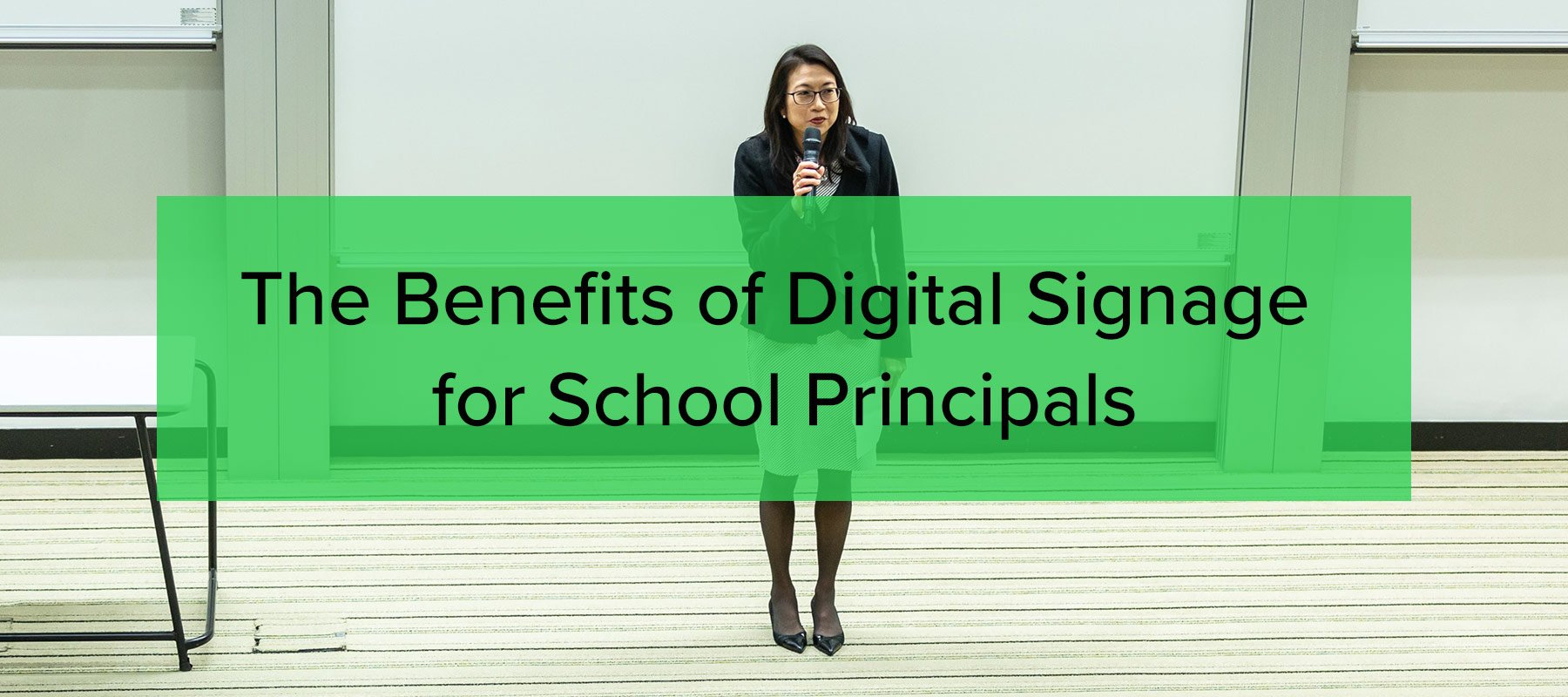
School leadership was once a rare topic of discussion. The federal and local administrations were seen as providing direction, while principals were teachers and the goals of the school would be decided in committee rooms and communicated from above. Administration was stressed, leadership disregarded.
Now, the contribution principals can make is more recognized. A 2015 survey placed principals third out of five factors, behind teaching quality and high expectations but ahead of funding and testing:
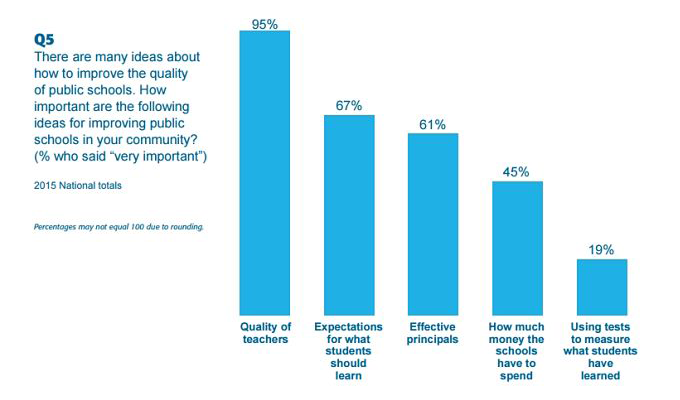
Of course, what we know but the public may not is that the quality of teachers and schoolwide expectations for students are dependent on principals. It’s the two least-rated factors, funds and tests, that come directly from the government. Academics agree with the public that the role of school principals is critical in creating school culture and in improving student outcomes.
Vision and goals
Principals are responsible for identifying and defining the school’s vision, mission, and strategic goals. Classroom teachers must ask, ‘which students require additional support?’ or ‘How do I get these ideas across better to these particular students?’ Principals must ask: how should this school look in ten years?’ and ‘What are we here to do?’
These visions and goals are not mere verbiages but the opposite: they create the conceptual framework within which the school’s culture evolves, its curriculum is evaluated and improved and its short-term goals are set and measured.
New Jersey’s Lincoln School offers the following:
The mission of Lincoln School is to provide an interactive learning environment which encourages our students to develop understanding, skills, and confidence by engaging them in a variety of activities that promote responsibility, respect, ethical values, critical thinking, and a lifelong commitment to learning.
This statement provides a guiding set of principles that can be reexpressed in school communications to partners, parents, students, and other stakeholders.
Schoolwide communication planning
School communication is crucial to performance. Daily alerts and the movement of operational information matter — just look at what happens when it’s interrupted by infrastructure outages — but equally important is the dissemination of the vision and mission articulated by the principal. Students don’t need to know the school song or have a Latin motto, but they do need to feel that they’re expected to perform well in a safe environment that will support them while they try to. High expectations and a positive learning environment both come from school communications and school culture, and those things come from principals.
A newsletter published once a week and a tannoy in the hallways was always an unsatisfactory approach, and now it’s an unnecessary one. Outside of communication with specialized stakeholders such as law enforcement and child services, school communication needs to be consistent, on message, and two-way wherever possible. It also needs to be tailored to its audience.
Segmented messaging
Segmented messaging is the craft of addressing the right messaging at the right time to the right sections, or segments, of your audience. Think about how scientists communicate about Covid. They tell each other, ‘The host receptor for SARS-CoV-2 cell entry is the same as for SARS-CoV, the angiotensin-converting enzyme 2 (ACE2).’ They tell us to wash our hands, mask and social distance because we’re not virologists. Even if we knew ACE2 from an Ace bandage, we couldn’t do anything with the information. We’re the wrong segment.
In the same way, students don’t need advice about a pedagogic or pastoral practice that teachers might require. The same vision and goals might provide guidance for two completely different approaches, where the difference is determined by who you’re talking to.
In schools, the challenge of segmented messaging is complicated by the fact that school populations are constantly moving. Put a sign up in a classroom that’s intended for grade 9 students; over the course of a school day, that sign might be seen by students in grade 9 who are struggling to find their feet within grade 9, all the way out to students in grade 12 looking forward to their next step and fully confident in their ability to navigate high school. The effects are even stronger in lower grades; beginner elementary students might not be able to read a sign whose content is too simple for fifth-graders.
So how can principals approach school communication effectively? The answer lies in a communication plan which is unified, segmented, and guided by an overarching vision and set of long-term goals. But such a plan requires a communication system that meets the same description, and most schools fall down here.
Static signage is often ignored, ineffective, and suffers from the fundamental drawback that it’s static, while school audiences are not. Dynamic digital signs are 400% more effective at attracting and retaining attention. But merely replacing static paper or cardboard signs with digital signs is not enough.
All too often, schools leave signage, and communication methodology, off the list of major decisions. Principals have enough to worry about and more, so it’s not hard to see why it happens. But signage is messaging, access, a medium through which to implement your vision for your school for which you, first, last, and most of all, are responsible. It needs to be responsive, controllable, easy to use, and centrally controlled so staff doesn’t have to wander the corridors resetting wall-mounted TVs with a thumb drive. When it’s done right, it can radically reduce the amount of time and effort expended on school communications — how does getting it down to one hour per week sound? — while also significantly improving results.
Five key areas of student communication
Principals’ contribution to the school environment through messaging and communication is hard to overstate, and it’s holistic; it can’t be broken down into its parts because it’s greater than their sum. But we can look at it through different lenses.
1: Communicating a vision of academic success for all students
Academic success for all students is a relatively new target for schools, which previously expected to turn out students equipped for an employment landscape dominated by factories, not by technology companies. The position of the principal as school leader rather than school manager is similarly new, and ‘research literature over the last quarter-century has consistently supported the notion that having high expectations for all, including clear and public standards, is one key to closing the achievement gap between advantaged and less advantaged students and for raising the overall achievement of all students.’
This can be done using something as simple as public due-date reminders, helping normalize the notion of working at home and meeting deadlines:
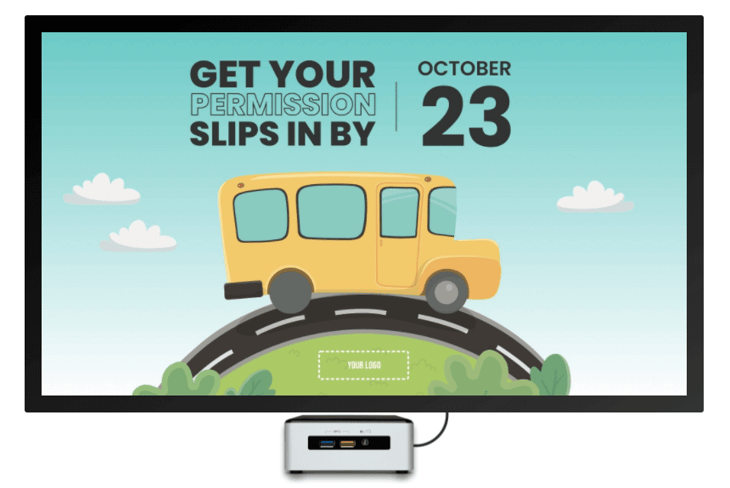
2: Create a supportive, education-positive environment
Some aspects of a positive environment for education are easier to quantify than others. In schools with basic problems like common disruptive classroom behavior, violence and truancy we can easily see the obstacles to participation and success. But it’s possible to have an orderly school with clean walls and new textbooks that still doesn't support academic achievement properly. Students need to feel safe to take risks and attempt difficult tasks, as well as know they can walk the halls safely.
Schools with better ‘instructional climates’ tend to outrank others in terms of developing an atmosphere of caring and trust, and such atmospheres develop best where they’re led from the top down by principals committed to cultivating them.
This is a matter of consistent messaging, including messaging that supports positive behavior amongst peers:
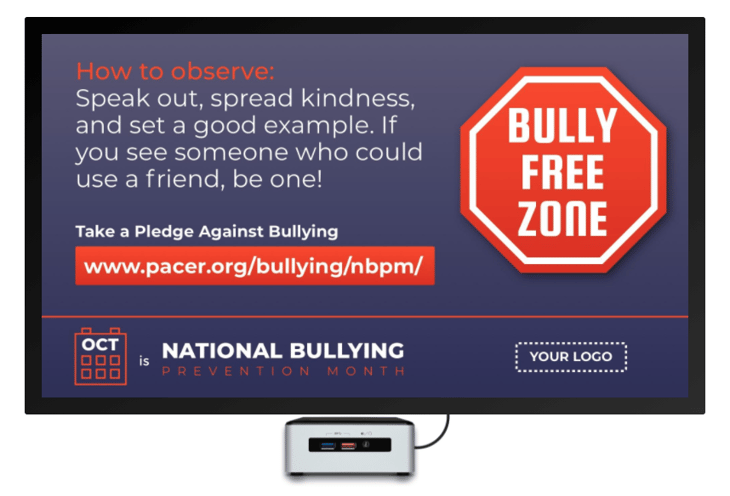
3: Encourage leadership and delegate
School principals need to encourage leadership in others. The ideal is a common commitment to a common goal, with leadership by example and inspiration. To achieve this, departmental heads and classroom teachers must be activated and encouraged to develop leadership skills and qualities they can use to inspire students. Teachers appreciate this approach: principals whose staff regarded them as good leaders were also seen as having a positive and encouraging attitude to leadership among their staff.
The same report found that leadership from all sources was associated with improved student outcomes: the more staff, school leadership, and student mentors stepped up and took on leadership activities and mindsets, the more students benefited. While students will primarily derive their knowledge of this from their own experience, school signage can be used to celebrate students who have excelled or led:
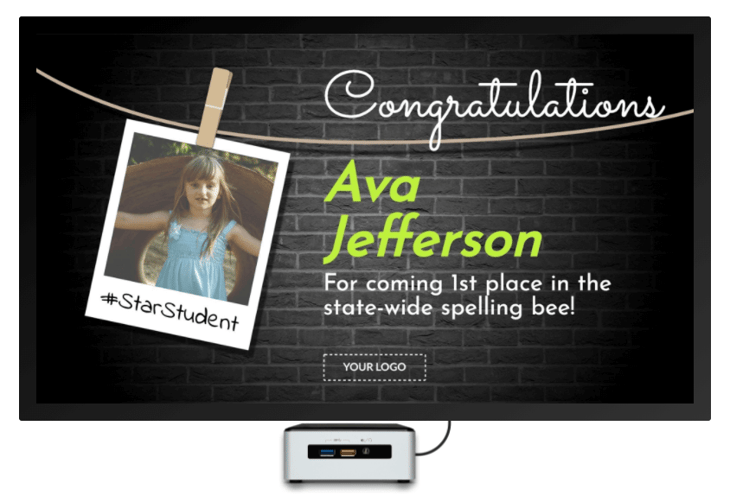
4: Drive teaching quality
Teaching quality is the number-one predictor of student academic success. And the biggest driver of teaching quality is what principals do. That starts with hiring good staff, something that’s a long way outside the scope of this post. However, it also includes guiding staff to take ownership of their professional development, assisting and encouraging where needed, and leading by example with frequent or daily connections to teachers and classrooms.
Principals of successful schools have their own checklists, and while they’re probably all different there are some commonalities: classroom visits, with an intent to provide instructional feedback based on a belief in each teacher’s ability to learn and improve, stands out.
Principals’ support of teachers can also be showcased in school signage:
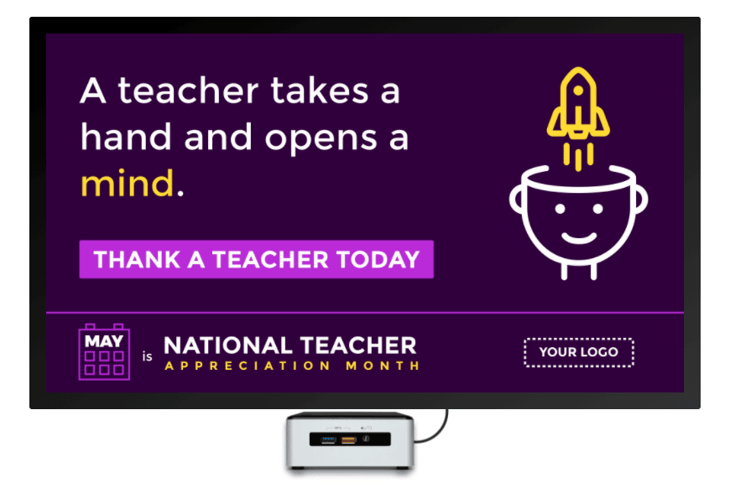
5: Managing to lead
Principals have to be both head teachers, and school managers. They’re leading an organization, taking the senior role among professional educators, and managing the school’s resources, all at the same time. The higher-order work, leading, inspiring, and guiding teaching staff and students, relies on the management. This is true of everything from school budgets to teacher time, from usage of school assets like gymnasiums and auditoriums to communication.
Communication is a major fall-off for schools; in 93% of schools whose communications budget — not budget — is under $250,000, the communications team is just one person.
This is an ideal opportunity for principals to exercise leadership by inspiring it, and to manage by delegating aims rather than tasks. School communications teams are usually under-resourced in everything from tools to skills and lack both autonomy and leadership. Principals are too busy to do the job themselves, so they need to create a culture where communications teams can step up, self-educate, and have ownership over what they do. That way, principals are free to lead, knowing that their communication team is ready to deliver accurate, target messaging to all stakeholders.
Conclusion
Principals shouldn’t select a digital signage solution for their school so they can use it. They should choose one so their communication team can use it and they can focus on the higher-order, higher-effect work of truly leading the institution they’re responsible for.
But they should lead the conversation when it comes to communication methodology, and that choice should be based on matching the toolkit to the job. Schoolwide communication systems should be easy to use, easy to target different segments of the school population, centrally controlled, robust and device-agnostic.





